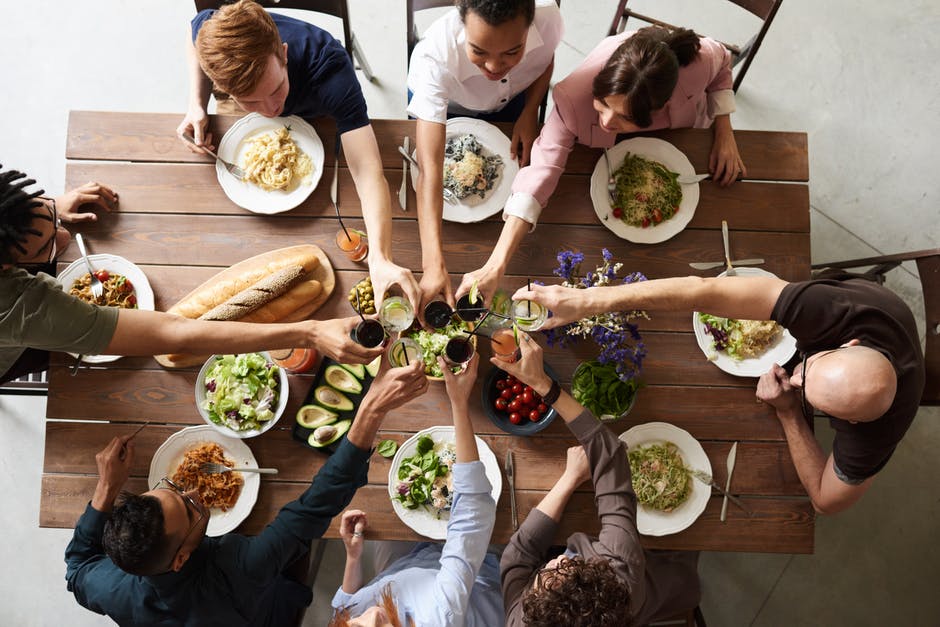Comments
- No comments found

Hosting a dinner party is a creative endeavor that encompasses a myriad of elements, each contributing to the overall experience.
While the menu takes center stage, the choice of beverages is an often underestimated facet that can elevate your gathering to new heights. In this comprehensive guide, we will delve deeper into the intricacies of selecting the perfect beverages for your dinner party, ensuring a harmonious blend that leaves a lasting imprint on your guests.

The foundation of exceptional beverage selection lies in a profound understanding of the cuisine you're presenting. Consider the flavor profile, texture, and intensity of the dishes you've meticulously prepared. If your menu features rich, savory dishes, opt for full-bodied wines like a robust Cabernet Sauvignon or a hearty craft beer. The depth of these beverages complements the complexity of the flavors, creating a culinary symphony on the palate.
For lighter fare, such as salads or seafood, lean towards crisp white wines or effervescent sparkling water. The refreshing quality of these beverages serves to cleanse the palate between bites, allowing each dish to shine individually. By aligning the characteristics of your chosen beverages with the essence of your cuisine, you set the stage for a seamless and delightful dining experience.
For menus that align with specific cultural or religious events, it's important to choose beverages that respect those traditions. Selecting a kosher wine for Passover is not just a nod to custom, but also a way to enhance the ceremonial aspects of the meal with appropriate pairings that echo the significance of the occasion. Plus, your guests will appreciate the thought and consideration put into the menu.
The art of beverage pairing extends to understanding and harmonizing intensities. Picture a spicy, intensely flavored dish – it requires a beverage with enough strength to stand up to its boldness. In this scenario, consider red wines with a touch of sweetness or robust beers with caramel undertones. The sweetness serves as a counterbalance to the heat, ensuring a harmonious balance of flavors.
Conversely, delicate and nuanced dishes thrive when paired with beverages of a subtler nature. A light Pinot Grigio or a milder lager can enhance the flavors of dishes like grilled vegetables or poached fish without overshadowing their finesse. The key lies in creating a balance where neither the food nor the beverage overwhelms the other, allowing each element to shine independently.
In our diverse and inclusive world, catering to varied dietary preferences is not just a considerate gesture; it's a necessity. Striking a balance between alcoholic and non-alcoholic options ensures that every guest feels valued and included. Craft creative mocktails using fresh and vibrant ingredients, offering a refreshing alternative to traditional beverages. Simultaneously, curate a selection of wines, beers, and spirits to cater to diverse tastes, ensuring there's something for everyone at your dinner table.
Furthermore, be attuned to dietary restrictions and allergies. A thoughtful host considers these aspects, providing alternative options for guests with specific needs. By doing so, you not only showcase hospitality but also create an environment where everyone can indulge in the culinary and beverage delights without any reservations.
The temperature at which beverages are served is a subtle yet impactful aspect of the dining experience. Red wines and full-bodied beers, with their complex flavor profiles, come alive at room temperature. Allowing these beverages to breathe and evolve enhances their characteristics, creating a more immersive experience for the connoisseurs at your dinner party.
On the flip side, crisp white wines, refreshing cocktails, and sparkling beverages are best served chilled. The coolness enhances their refreshing qualities, making them the perfect accompaniment to warmer days or lighter fare. Paying attention to the temperature of your chosen beverages adds a layer of sophistication to your hosting skills, demonstrating a meticulous approach to every detail of the dining experience.
While conventional pairings are delightful, consider taking your dinner party to the next level by incorporating pairing enhancements. Craft beer and cheese pairings, for instance, introduce a dimension of complexity and depth to your beverage selection. The rich, malty notes of certain beers can complement the creaminess of cheeses, creating a tasting experience that engages the senses in a dynamic interplay of flavors.
Similarly, wine and chocolate combinations can elevate the dessert course. Delve into the world of dessert wines, exploring the interplay between sweetness levels and chocolate intensity. Whether it's a velvety red wine with dark chocolate or a sweet Riesling with a white chocolate treat, these pairings can transform the final course into a decadent celebration of flavors.
Signature cocktails with complementary garnishes offer another avenue for experimentation. Consider incorporating fresh herbs, citrus zest, or even edible flowers to add a visual and aromatic element to your beverages. These enhancements not only showcase your creativity but also create a memorable and unique atmosphere, sparking conversations and delighting the senses of your discerning guests.
The changing seasons bring about shifts in culinary preferences and beverage cravings. Aligning your beverage choices with the seasonal elements not only showcases your attention to detail but also enhances the overall thematic experience of your dinner party.
In warmer months, consider refreshing cocktails that feature seasonal fruits and herbs. Crisp white wines and light beers are also crowd-pleasers, providing a cool respite on balmy evenings. The effervescence of sparkling beverages can add a touch of celebration to summer gatherings, making them particularly well-suited for outdoor affairs.
As the temperatures drop, transition to heartier options that warm the soul. Mulled wine, with its aromatic blend of spices, creates a cozy and inviting atmosphere. Spiced cocktails, featuring ingredients like cinnamon and nutmeg, resonate with the comforting ambiance of fall and winter. By tailoring your beverage selections to the season, you not only enhance the overall theme of your dinner party but also create a more immersive and enjoyable experience for your guests.

In the intricate tapestry of hosting a dinner party, selecting the right beverages is a nuanced and thoughtful endeavor. By embracing the nuances of your cuisine, matching intensities, considering dietary preferences, paying attention to temperature, exploring pairing enhancements, and aligning with seasonal elements, you can curate a beverage selection that complements your culinary creations and ensures a memorable dining experience for all. As you raise a glass to toast the success of your gathering, revel in the knowledge that you've mastered the art of beverage pairing and created an unforgettable evening for your guests. Cheers to the perfect dinner party!
Leave your comments
Post comment as a guest